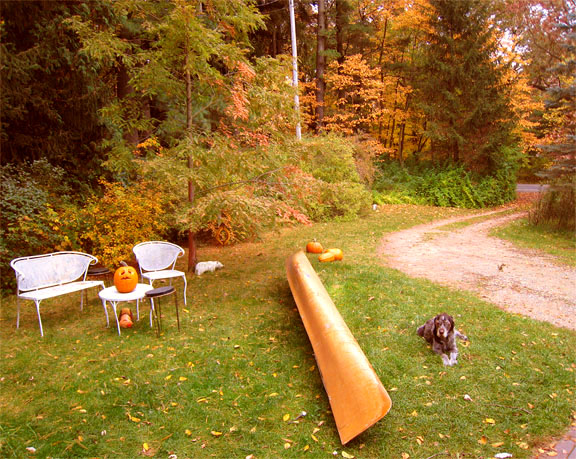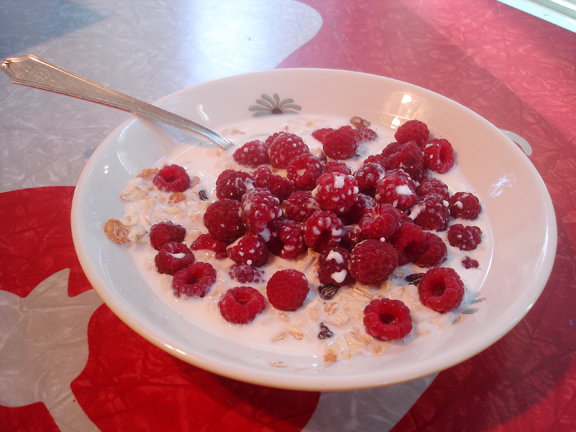I enjoy growing everbearing raspberries. They’re very hardy and nothing much seems to aggravate them here in Michigan. They’re self-propagating and then respond well to transplanting. They yield an awful lot of tasty fruit, which in turn seems to store and freeze nicely. And if you ever want to turn ’em into cash, that’s easy, too. It’s win-win all around.
They have ONE weak link that I’ve discovered so far.
I’ve read all the Master Gardener material and I’ve read about how to respond to trouble in the berry patch, but only now do I fully appreciate this one weak link.
Ya gotta give ’em space.
It’s so tempting to rather pack ’em in. I’ve been arranging my rows on the thin side. And thinning my new canes on the thick side. Maybe some folks can thrive like that, but I have a lot of nearby tree and forest cover that reduces both breeze and sun. Ya can’t have it all. If you try to get it, you end up with far fewer berries and a fair dose of sadness as you watch your lovely crop…
…melt away into mold.
Yes, the Gray Mold, or Botryitus Mold, will get ya, sure as shootin’.
It’ll NUKE ya.
You’ll go from bumper crops — quarts daily — to MUSH, overnight.
That’s sad.
So… give your rows elbow-room. Wire your canes straight and tall. And thin ’em so that nobody touches anybody else.
If one fruitpacked cane leans over and muffles another, the underberries will all die a miserable death — and then they’ll spread their mold to the upper berries. In, like, one day.
The crazy thing is that the disaster is sporadic. 10 berries on a cane will be great. Right next to them 10 others will catch the mold. And next to those 10 others will get the “shriveling-bursting syndrome” which is just another cute way the mold manifests.
And the even crazier thing is that you got infected back when the canes were flowering. Of course, the mold is happy to spread long after its dreadful bloom.
So, in addition to our aerating and spacializing… Throw all post-season canes far away from your patch. Burn ’em, in fact. And haul far away any infected fruits and canes that you attack during the harvest. You don’t want any old fruit or canes laying around.
When you read about this stuff in the how-to info, they’re serious!
…And get rid of the bandits, too. The wonderful wild black raspberries have no business being near your patch.
Get rid of all weeds, too — they weaken the berries and impede airflow.
And if you notice that some of your canes yield tasty fruit and others don’t, well, spread the good ones and nuke the bad. I have some sections of my patch that always seem to be weak, bland and skimpy. No more excuses! I’m going to pull out those canes and repropagate canes there from known good plants. This genetic control stuff works!
Lastly, once you pick your berries, cool ’em down and don’t move em much. Ideally, don’t move ’em at all. Pick em into what you’re going to keep them in. And, ideally, this is a shallow sort of thing.



